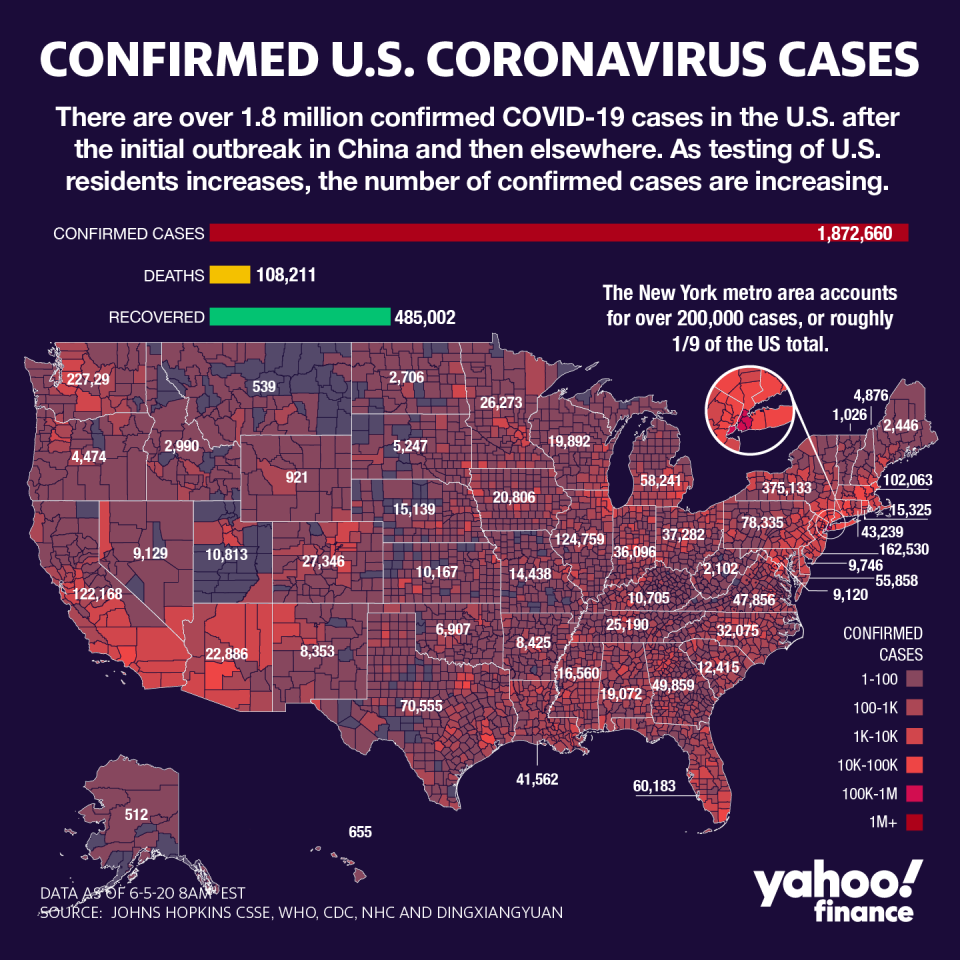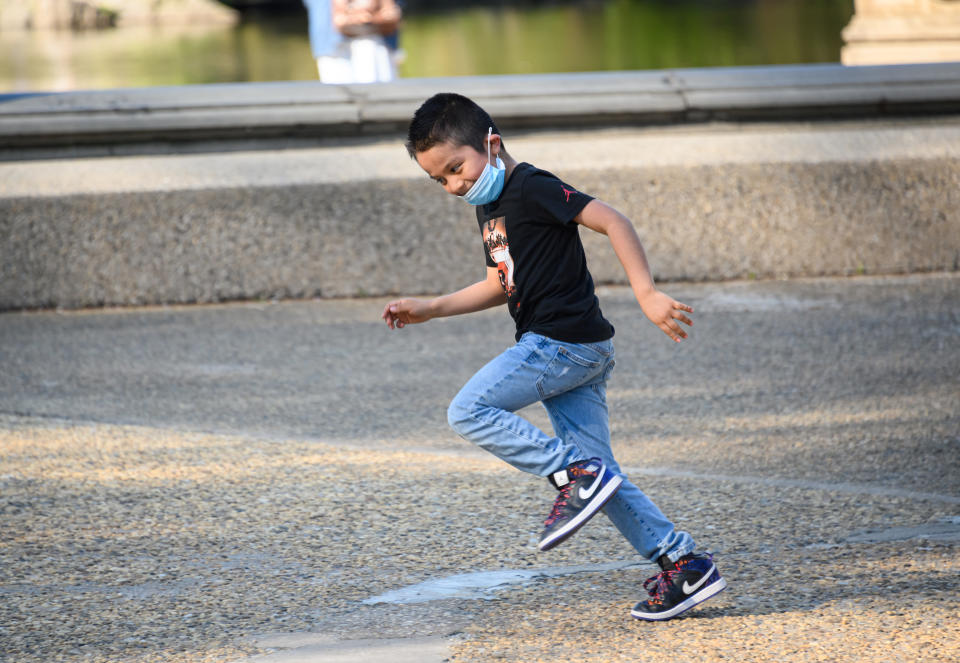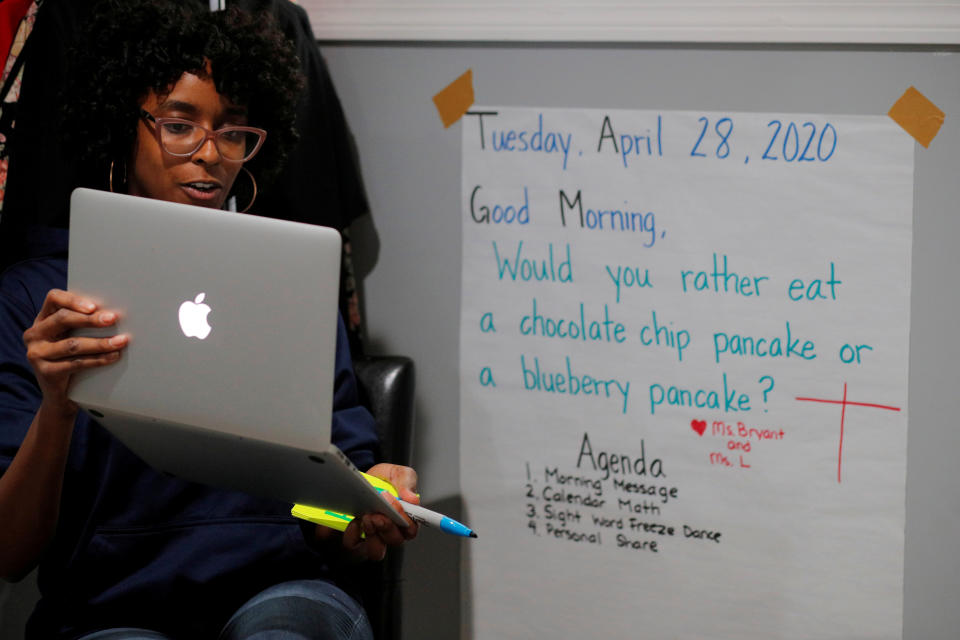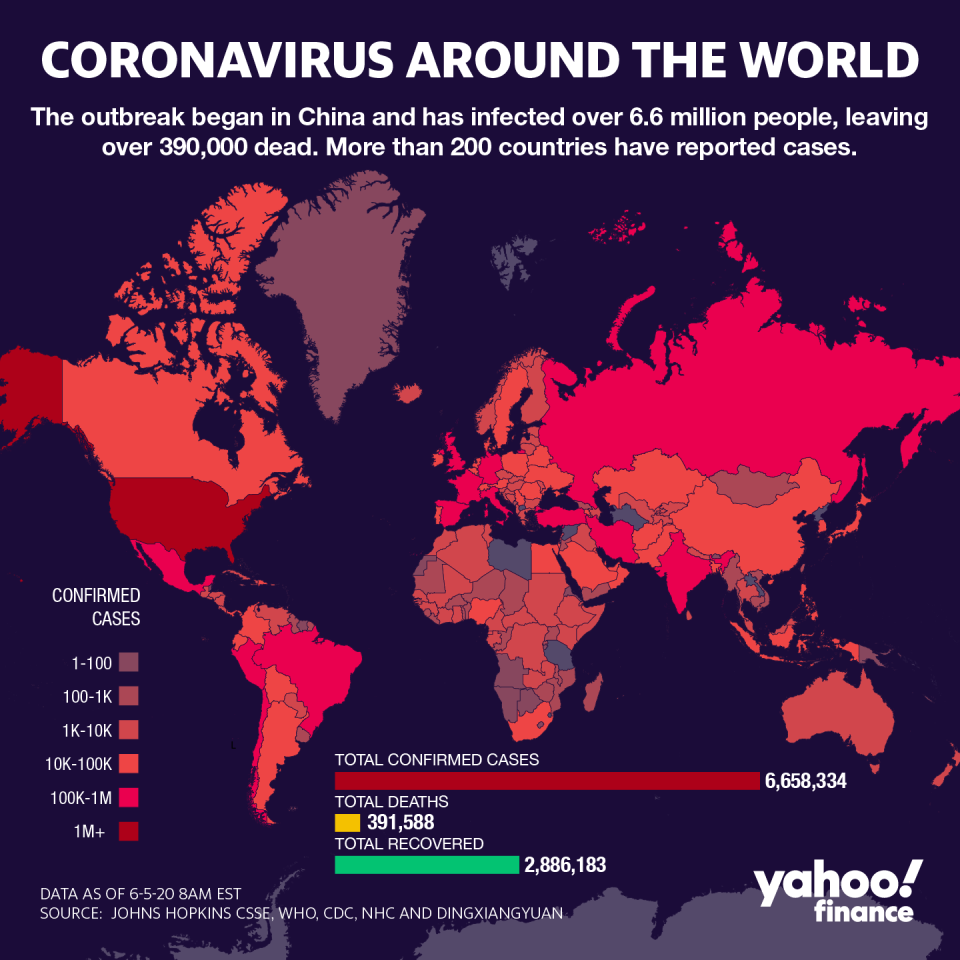Coronavirus: 'Children will probably be an important vector for transmission'
With the number of coronavirus cases on the decline in many states across the U.S., many parents are now wondering whether it will be safe to send their children back to school in September.
“That’s really going to have to be a local decision based on what’s happening in the community and whether or not it’s appropriate to go back to full classes the way that we had or if there’s a staged approach,” Dr. Brian Garibaldi, biocontainment unit medical director at Johns Hopkins University, said on Yahoo Finance’s The Ticker recently (video above).

On Wednesday, Dr. Anthony Fauci, the director of the National Institute of Allergy and Infectious Diseases (NIAID), said it might be “a bit of a reach” to keep schools closed in the fall because of coronavirus fears. He told CNN that children tend to have milder symptoms if they’re infected with COVID-19.
The problem though, according to Garibaldi, is that children could still pass it onto others.
“If this virus follows other respiratory virus patterns, children will probably be an important vector for transmission,” Garibaldi said. “We need to be mindful not just of the children’s safety but also teachers and families who are sending children to schools who may have at-risk family members at home or themselves be at higher risk from the disease.”

A decision at the local level
Dr. Fauci recommended that decisions on whether or not to reopen schools should be based on infection rates in each individual community. Dr. Garibaldi agreed, and said that schools should also be considering alternative learning options.
“It really has to be a local, community-based decision based on what’s happening in your community,” Garibaldi said. “Is it safe to bring the children back or can you do outdoor classes? Can you do a combination, hybrid, telecommuting for some students, and then rotate who’s on campus?”
Garibaldi serves as an advisor on a committee at his children’s school to help with reopening. A decision still hasn’t been made yet for when their classes will resume.

“We’re still struggling with: What are the metrics we’re going to use to decide how to bring back students?” he said. “Who do we prioritize if the lower students that come back earlier, because they benefit more probably from in-person learning? Those are some big questions that the entire country is faced with right now.”
In Indiana, the Department of Education released a 38-page set of recommendations for schools to take into consideration, such as teachers and students wearing face masks, but does not mandate anything, leaving the onus on each of the schools. Georgia’s education department released similar guidelines.
“There are lots of ways to approach it,” Garibaldi said. “We’re in sort of no-data land right now, because this has never really happened before. We have to pay attention to what other people are doing and learn from that experience.”

‘A global phenomenon’
Although Garibaldi said that reopening schools should be based on each individual community, he stressed that this pandemic is “a global phenomenon.”
Israel, a country with fewer than 300 deaths from coronavirus, reopened its schools in May.
But within two weeks, an outbreak of COVID-19 swept through classrooms, with over 200 cases (at one school, there were at least 130 cases). As a result, more than 6,800 students and teachers were placed under quarantine.
South Korea experienced a similar problem, and was forced to close schools again as well.

“We need to keep our eyes open to what’s happening in other countries who have started opening schools earlier because of their different school seasons,” Garibaldi said. “Even though children aren’t as affected severely from this virus as adults, we’ve seen these inflammatory states that can happen to children. But that’s very rare.”
Over 100 children in New York City have been diagnosed with multi-system inflammatory syndrome (MIS-C), a severe illness linked to COVID-19. But it’s not just limited to the U.S. — cases have appeared in children in France, the U.K., and Italy as well.
“If there are hotspots of this virus in the world, until there’s a vaccine, that will always represent the possibility of creating further hotspots in other nations and spreading back to the United States,” Garibaldi said. “This is a global problem, even though we’re talking about it in terms of the local and community responses that we have to do on a local level in the United States.”
Adriana is a reporter and editor for Yahoo Finance covering politics and health care policy. Follow her on Twitter @adrianambells.
READ MORE:
ICU doctor warns: 'We could lose control of the virus again'
ER doctor: 12-18 month coronavirus vaccine timeline 'is extremely optimistic'
Read the latest financial and business news from Yahoo Finance
Follow Yahoo Finance on Twitter, Facebook, Instagram, Flipboard, SmartNews, LinkedIn, YouTube, and reddit.
